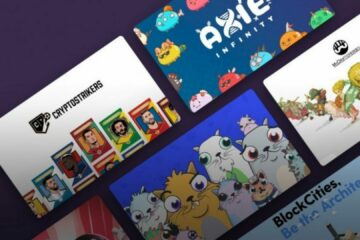Digital tokens can be used to represent any real-world asset, from voting rights in an organization to the right to stream a particular song. This article will cover how you can use digital tokens for your own purposes and create one of your own!
What is a digital token and how does it work ?
A digital token is an asset created on top of a blockchain. This means the concept has two parts: (1) the underlying technology that enables it (blockchain), and (2) the structure of the asset itself, typically coded into some smart contract.
Depending on how you choose to use your token, its value can be either intrinsic or represent something else entirely. For example, Civic tokens are used for identity verification in their ecosystem. They may not have any intrinsic value at all – unless someone wants to verify their identity using Civic tokens instead of money. Other tokens were conceived with more innovative ideas in mind, like Augur’s Reputation tokens which enable users to report outcome data about real-world events. All other systems built on top of Augur will have to use Reputation tokens for reporting accuracy, putting a value on the token.
What problems do digital tokens solve?
By carefully constructing a smart contract, you can remove many issues associated with other traditional assets . These include:
– Ownership: Because a token is an asset on a blockchain, it’s possible to easily verify who owns it and what percentage they own by assigning each address their own private key (basically unique identifiers that only they can access). If you want to transfer your funds to someone else, all you need to do is send them your private key and the transaction will be carried out automatically.
– Transparency: Since we know who owns how much of an asset at any given time, we can also determine how much of the company each individual is entitled to. This transparency makes it easier for employees and stakeholders to align their interests and give everyone what they need.
– Settlement: Since assets are transacted on a blockchain , no actual money is needed to complete a trade . All transactions are recorded as cryptographic signatures that only the owner of an account can make with their private key. With such an asset, you don’t have to wait for days or weeks to clear all your trades; Settlements occur nearly instantaneously with most tokens (most blockchains settle transactions in minutes).
How do I create my own digital token?
So now that we know what a digital token is and why it’s useful, how can you create your own?
To build a token, you’ll need to code the structure of the asset into something called a smart contract. These contracts live on top of existing blockchain platforms and serve as a way for many people to manage shared digital assets responsibly.
For a good place to start in terms of coding smart contracts, check out this tutorial . This site teaches how to program in Solidity , which is Ethereum’s built-in language for writing smart contracts. A working knowledge of JavaScript will help you get started with Solidity quickly since they both have similar syntax due to their common ancestor, ECMAScript .
Once you finish coding your digital tokens, there are several tools that can help you publish them on an existing blockchain. One of the more popular ones for Ethereum tokens is MyEtherWallet . This site can connect your new smart contract to a live website that users can easily access.
How else are digital tokens used?
Digital tokens don’t necessarily have to represent ownership stakes in an asset or company like I talked about above; They can also be used as entries into exclusive events , coupons, etc.
Certain cryptos like Civic and Basic Attention Token (BAT) use their digital token as a way to verify someone’s identity on the blockchain . This allows for both secure sharing of personal data without compromising privacy and enables much lower costs associated with verifying people online. If you wanted to learn more about how these types of projects work , here’s Vox’s great video explaining how Civic works .
Finally, digital tokens can be used to incentivize people to contribute to tasks that would benefit the greater good.
For example, consider an online platform where anyone can contribute their time and talent in order to help scientific research projects get done more quickly. Assign each person who contributes a small amount of effort to certain parts of the project its own digital token so you can keep track of who does what and compensate them accordingly.
Can I create my own digital token?
Of course! Digital tokens are much easier than physical ones because there’s no need for minting or unique serial numbers; You just code up an agreement that says “If someone sends this specific value X over here Y (where X can represent a number of tokens and Y can represent a specific blockchain address) then the contract will complete this action Z.”
You could also base your token off an existing smart contract that someone else has made. This is how most digital tokens are created on Ethereum currently, since it’s known for its ease when it comes to making these types of contracts. You can search GitHub for popular ERC-20 smart contracts like The Golem Project or ICONOMI . Once you find one that satisfies your needs, you can use their code as a model to make your own unique version.
If you’re strapped for time but still want to create your own token (or sell them in exchange for Ether or BTC), there are services like Token Factory that let you do just that . Simply follow their step-by-step instructions to create your own digital token or sell them off on their platform.



0 Comments